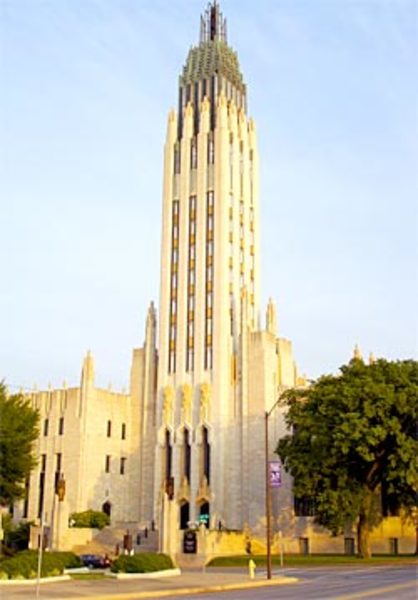
The Boston Avenue Methodist Church is one of Tulsa’s most beloved Art Deco icons. (Photos: Tulsa Preservation Commission)
Thanks to back-to-back oil booms that left the residents of Tulsa, Oklahoma, relatively flush while the rest of the country battled the Great Depression and World War II, the city’s fervor for Art Deco architecture continued long after the style fell out of fashion with the mainstream. As a result, Oklahoma’s second-largest city is one of the best places in the country to see every type of Deco building imaginable, from high-rise office buildings and schools to homes and churches. We asked Preservation Planner Amanda DeCort, who heads up the Tulsa Preservation Commission, to take us on a (virtual) tour of her city and point out her top 5 can’t-miss Deco gems.
Boston Avenue Methodist Church
With a towering spire that reaches 258 feet up toward the heavens, the 1929 Boston Avenue Methodist Church has been hailed as both the finest example of ecclesiastical architecture in America, as well as the first church to be built in a solely American architectural style. Its design is jointly attributed to noted Tulsa architect Bruce Goff and his mentor, art teacher Adah Robinson. (Goff and Robinson also were responsible for the Tulsa home featured in Old-House Living, which originally served as an art studio for Robinson.) Fourteen floors comprise the show-stopping tower; a prayer room, history room, and church offices are located at the top.
Oklahoma Natural Gas Building
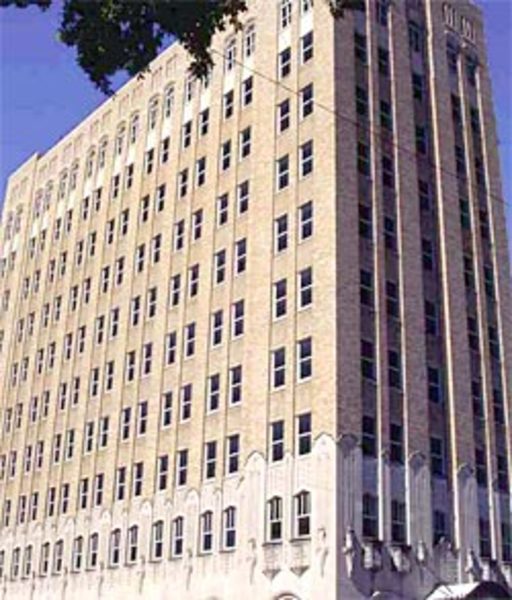
The zig-zag Oklahoma Natural Gas Building is said to have spearheaded the Art Deco fervor in Tulsa.
“This is a great zig-zag skyscraper,” says DeCort of the Oklahoma Natural Gas Building, one of the first Art Deco structures built in Tulsa. Designed by A.M. Atkinson in 1928, the exuberant zig-zag detailing on the 10-story structure is a hallmark of early Art Deco designs. The building, commissioned by a company with a highly conservative reputation, is credited with paving the way for wider acceptance of Art Deco within the city. After the Oklahoma Natural Gas Company vacated the building in the mid-1980s, it remained virtually empty for years, but plans for an adaptive-reuse project are currently underway.
Fire Alarm Building
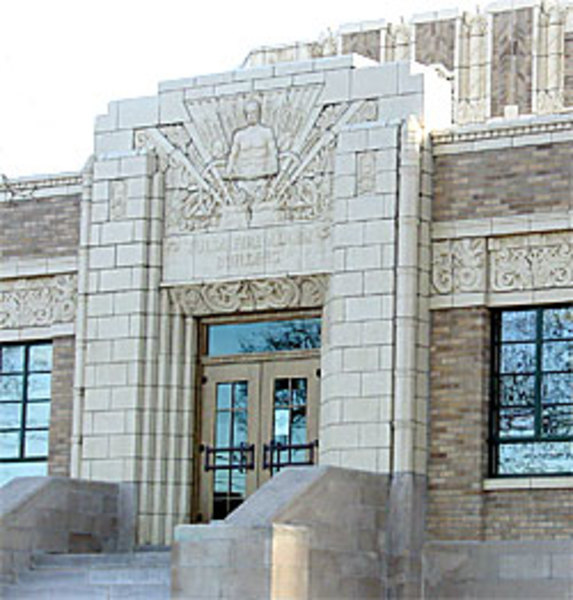
The purpose of the Fire Alarm Building is reflected on a decorative frieze.
Crowned by an elaborate terracotta frieze that blends firefighting symbols with elements of Mayan mythology, the 1934 Fire Alarm building is “a small but significant—and highly ornate—structure,” says DeCort. Designed by Frederick V. Kershner, the building’s entrance was originally flanked by elaborate Deco-style lanterns. From its inception until 1984, the structure served as a central switchboard for fire-alarm systems throughout the city. It recently underwent a complete restoration, and is now an office for the local arm of the American Lung Association.
Will Rogers High School
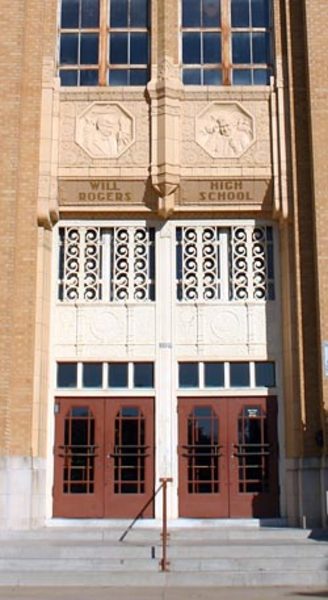
Images of the school’s namesake crown the doors to Will Rogers High School.
The first Tulsa school building to make it on the National Register, the 1938 Will Rogers High School is an enduring example of the Deco style that evolved during the Public Works Administration period. Designed by Leon Senter and Joseph Koberling, Jr. (the latter of whom was also a student of Adah Robinson’s), the school was touted by Time magazine as being “a model progressive high school.” The entrance to the buff brick building is topped by two panels, one depicting Will Rogers the cowboy, and the other Will Rogers the movie star. To mark the school’s 70th anniversary in 2009, students and staff are hosting guided tours of the historic interior every second Monday night of the month throughout the school year.
City Veterinary Hospital
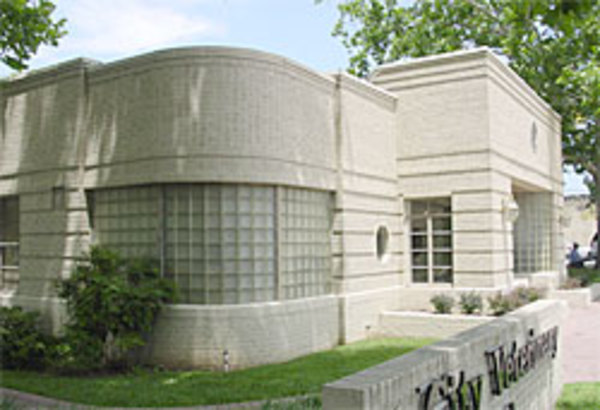
The Streamline City Veterinary Hospital has served its original purpose for nearly seven decades.
Also designed by Koberling, the 1942 City Veterinary Hospital is still in its original use. With its rounded glass-block corners and banded parapet roof, the diminutive structure “is a great example of Streamline,” says DeCort. Brookside, the neighborhood where it resides, is home to a number of other fine Streamline structures.
For information on other Art Deco structures in Tulsa, including a number of private houses, check out the Tulsa Preservation Commission’s list of buildings throughout the city.







